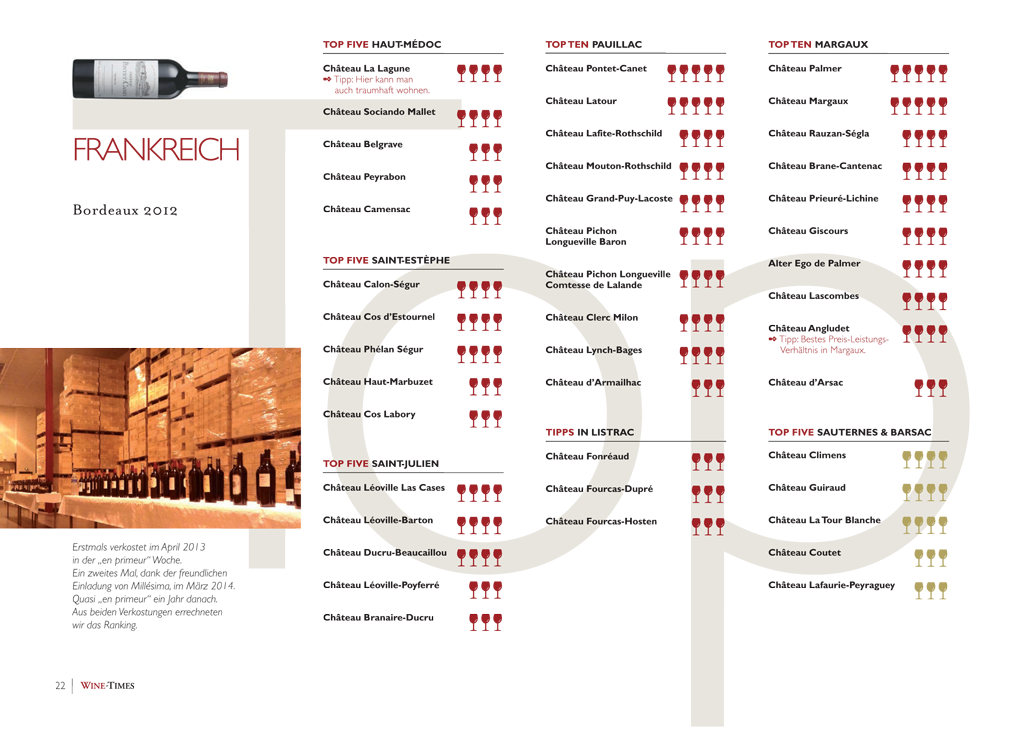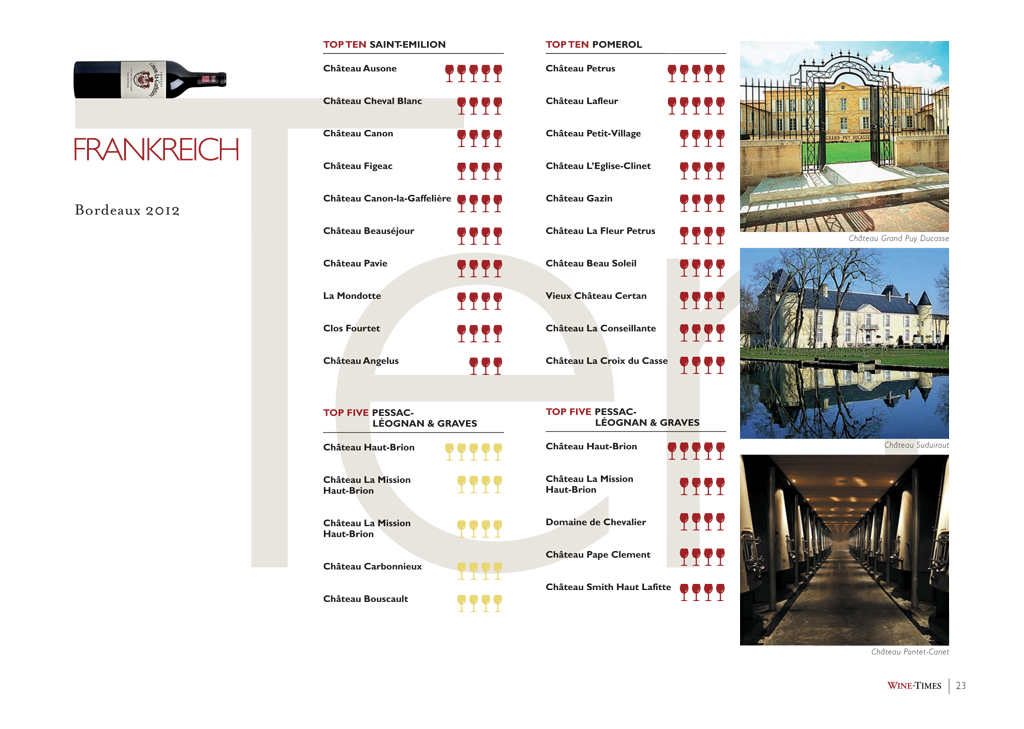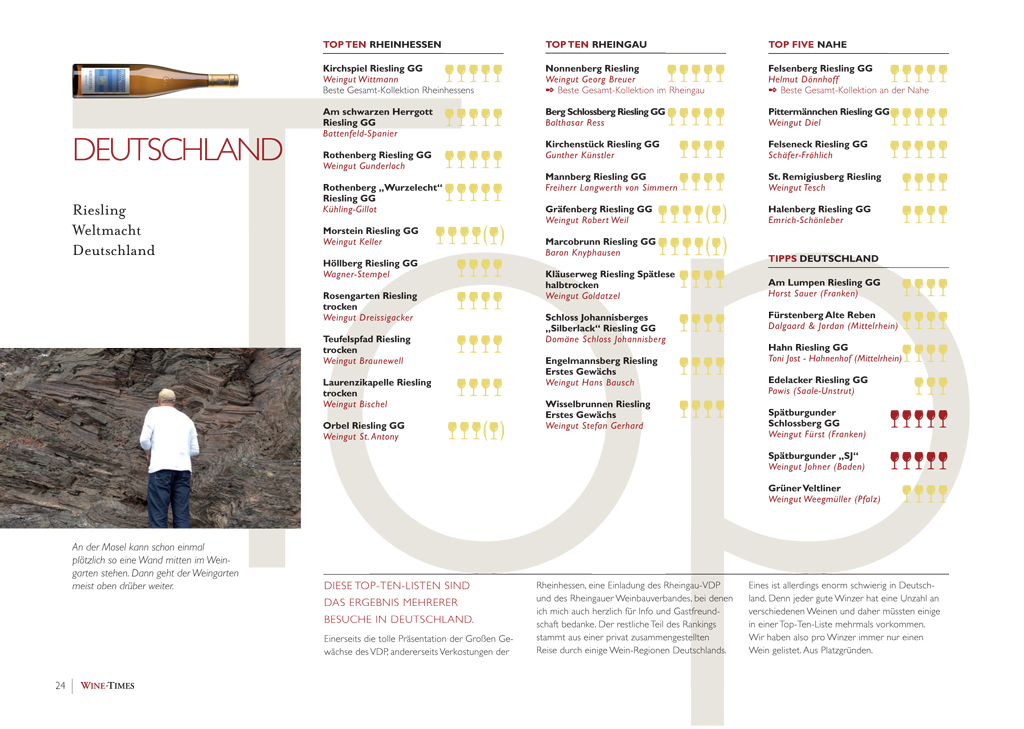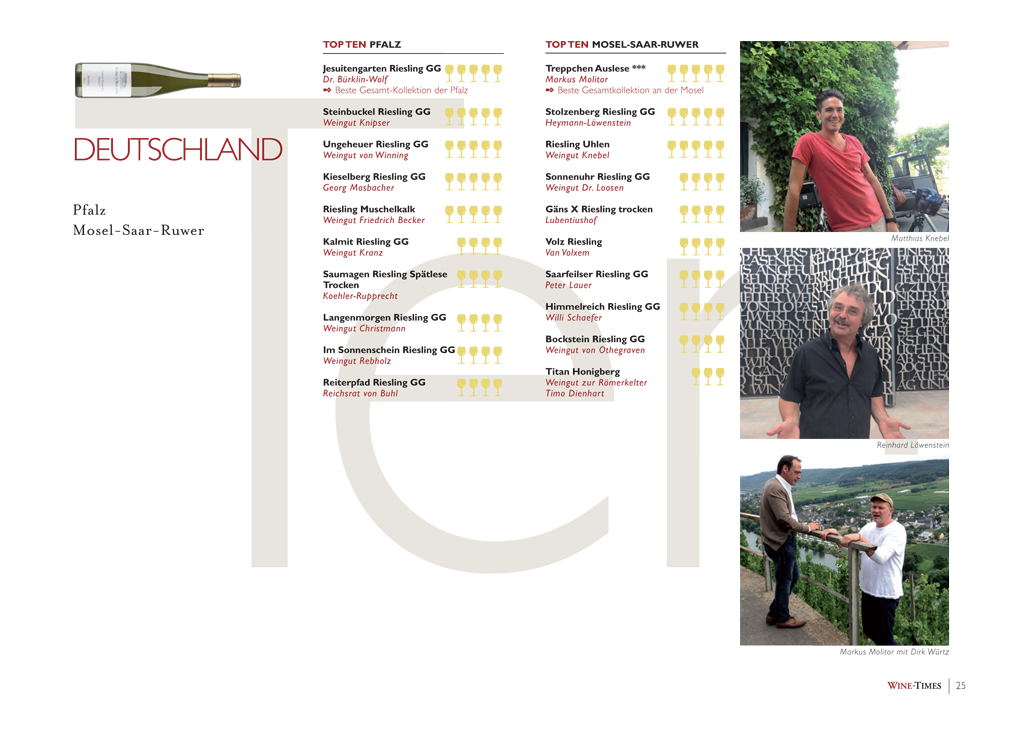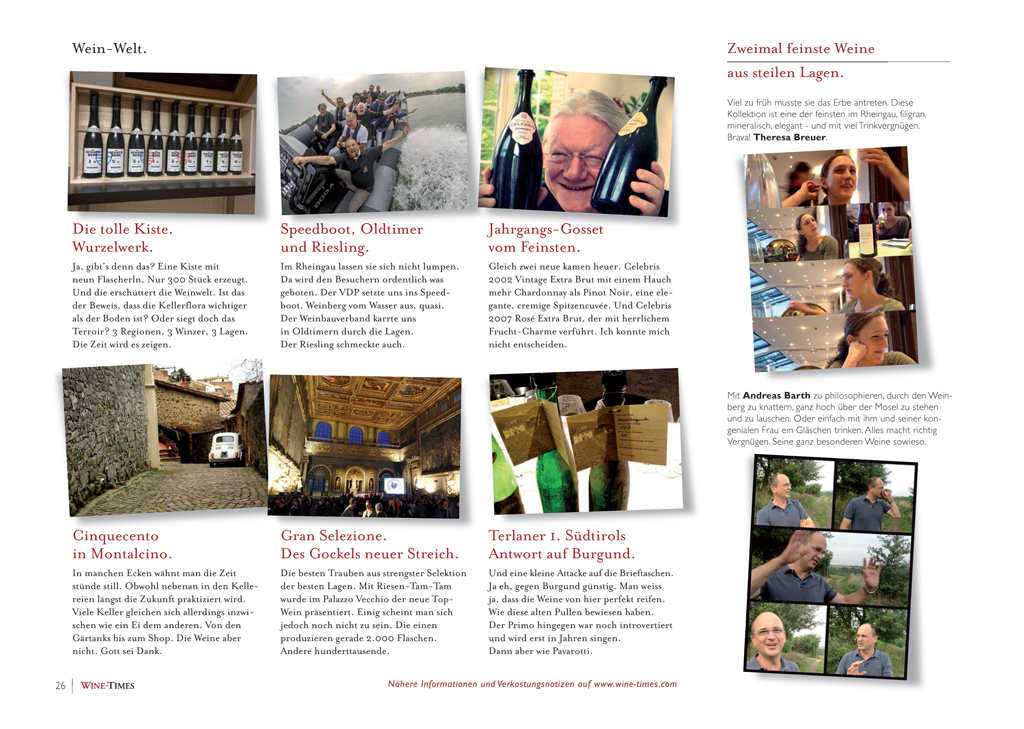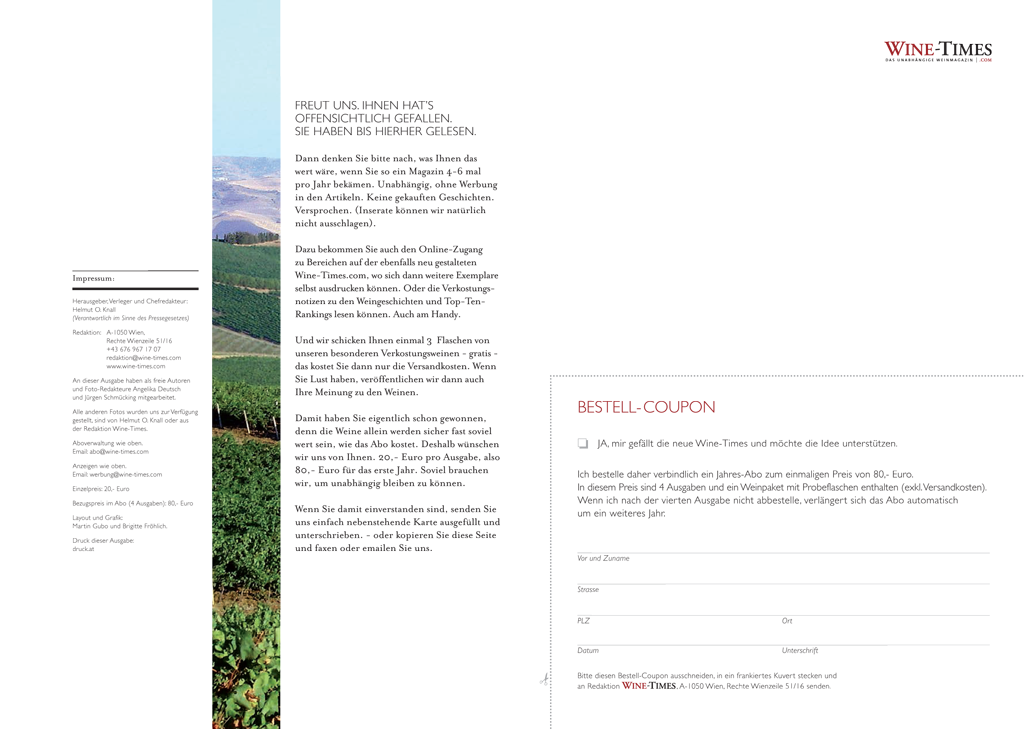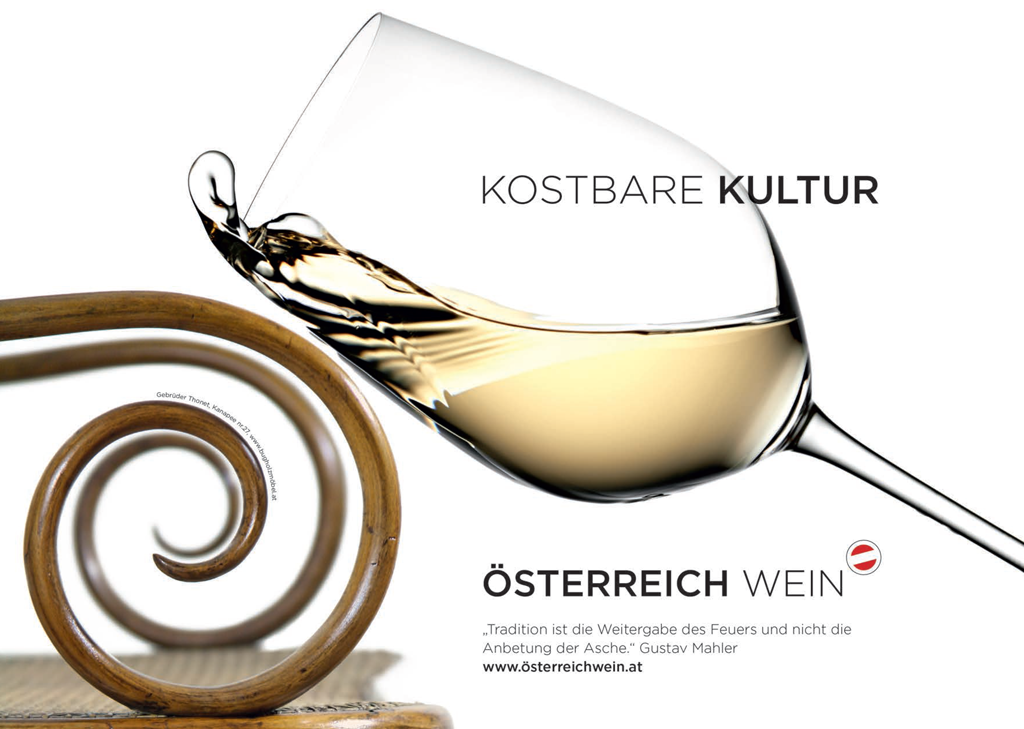Hier geht's zum aktuellen Wine-Guide-Austria in deutscher Sprache, dem ultimativen Nachschlagewerk zum österreichischen Wein.
Have you had Gouqi Wine?
John U. Salvi, MW, in China. Searching for the king of healthy berries.
Berries, healthy for everybody and specially for the wallet of Mr. Jin Shang Zhang, who made so much money on these berries, to be able to buy Chateau Grand Moueys in Bordeaux and still has some more plans...

Wine-Times Correspondant John U. Salvi, MW and Mr. Jin Shan Zhang.
We all know that the official definition of wine is "the freshly fermented juice of the GRAPE", but in China the fermented product of the Gouqi Berry, about which I am writing, is also called wine. Strictly it should be termed "fruit wine" so both terms are used in this article wherever deemed appropriate.
For most of us a visit to China is something unusual and special and for me a visit to the relatively tiny and distant Province of Ningxia, in deepest China, was especially so. Ningxia is 1,200 kilometres from the sea with a continental climate. It is the smallest of the Autonomous Regions of China known as Ningxi¨¤ Huiz¨² Zizh¨¬qu (Ningxia Hui), created in 1958 as part of the People's Republic of China. It is the Great Loop of the Huang He (Yellow) river and is surrounded by Inner Mongolia to the North, Gansu to the south and Shanxi to the east. Its borders merge with three deserts. Most of it is at 2,000 metres altitude and the climate close to the Helan Mountains is ideal for grapes with a rainfall of some 200mm/year. Hui means Moslem and the original Province was created for them in 1928. Today some 80% of the population of a little fewer than 6 million is Hans and the other 20% Mandchous, Mongol, Tibetan and Dongxiang. Ruins of the Great Wall can be seen in east Ningxia. The Tengger Desert lies behind the Yellow River.
For most of us a visit to China is something unusual and special and for me a visit to the relatively tiny and distant Province of Ningxia, in deepest China, was especially so. Ningxia is 1,200 kilometres from the sea with a continental climate. It is the smallest of the Autonomous Regions of China known as Ningxi¨¤ Huiz¨² Zizh¨¬qu (Ningxia Hui), created in 1958 as part of the People's Republic of China. It is the Great Loop of the Huang He (Yellow) river and is surrounded by Inner Mongolia to the North, Gansu to the south and Shanxi to the east. Its borders merge with three deserts. Most of it is at 2,000 metres altitude and the climate close to the Helan Mountains is ideal for grapes with a rainfall of some 200mm/year. Hui means Moslem and the original Province was created for them in 1928. Today some 80% of the population of a little fewer than 6 million is Hans and the other 20% Mandchous, Mongol, Tibetan and Dongxiang. Ruins of the Great Wall can be seen in east Ningxia. The Tengger Desert lies behind the Yellow River.
A Chinese in Bordeaux. A Bordeaux-Brit in China.

Mr.Jin Shan Zhang in front of his Château Grand Moueys.
I had been invited to Ningxia by Mr. Jin Shan Zhang, who just a few months ago bought Château Grand Moueys in Bordeaux. I had thought to report on his wine activities in China and his plans for Grand Moueys, but I discovered on arrival that wine is only a very minor part of this remarkable man's empire, a mere 54 hectares of vineyards and an import company. I have therefore written a separate article about wine from grapes and this article about wine from the gouqi berry upon which his fortune is founded. Indeed he is the undisputed king of the Gouqi Berry (in the UK usually Goji Berry) as we shall see.
So what is it, this very special berry?

The Goji - Berries freshly harvested in bright red.
Gouqi berries, Lycium Barbarum, are a species of Boxthorn of the family Solanaceae. Commercially known as "Goji berries" and often referred to as the "king of berries" these are bright red berries that grow on bushes and have remarkable and universally accepted nutrient and antioxidant properties.
The English name is Wolfberry, but they are also known as Mede Berry, Barbary Matrimony Vine, Bocksdorn, Duke of Argyll's Tea Tree, Murali and Red Medlar. Strange though it may seem the Solanaceae family also includes the potato, tomato, eggplant, chilli pepper, tobacco and deadly nightshade! In Europe they are chiefly sold in health stores, but in China absolutely everywhere.
The English name is Wolfberry, but they are also known as Mede Berry, Barbary Matrimony Vine, Bocksdorn, Duke of Argyll's Tea Tree, Murali and Red Medlar. Strange though it may seem the Solanaceae family also includes the potato, tomato, eggplant, chilli pepper, tobacco and deadly nightshade! In Europe they are chiefly sold in health stores, but in China absolutely everywhere.
Wine from red berries instead of grapes?

The healthy berries in the so called ORAC-Test.
Mr. Zhang makes wine with them and has patented it universally throughout the world. He sells (wait for it!) 30 million bottles per year throughout China - YES 30 million!
Ningxia Province produces most of them and here alone there are some 15 million Mu (15 Mu = 1 hectare). He also sells Gouqi brandy (Cognac in China), Gouqi tea from the leaves of the bush, sun-dried Gouqi berries, and Gouqi oil in capsules for rubbing into the skin or taken as a health supplement.
The Duke of Argyll imported the bushes into the UK in the 1730s where it was used for hedging and still is today. It is legal in the UK to sell the wolfberry as food. In China, as a food, dried wolfberries are traditionally cooked before consumption. Dried wolfberries are often added to rice congee and almond jelly as well as used in Chinese tonic soups in combination with chicken or pork, vegetables, and other herbs such as wild yam and liquorice root. The berries are also boiled as an herbal tea, often along with chrysanthemum flowers and/or red jujubes, or with tea, particularly puerh teas.
Mr. Zhang is not involved here, but various fruit wines containing wolfberries (called g¨¯uq¨« ji¨³; èÛè½¾Æ) are also produced that are a blend of grape wine and wolfberries. Since the early 21st century, an instant coffee product containing wolfberry extract has been produced in China. Young wolfberry shoots and leaves are also grown commercially as a leaf vegetable.
An unsupported Chinese myth relates that Li Qing Yuen, who consumed wolfberries daily, lived to the ripe old age of 252 (1678-1930) due to the vitamin C content of Goji berries.
Ningxia Province produces most of them and here alone there are some 15 million Mu (15 Mu = 1 hectare). He also sells Gouqi brandy (Cognac in China), Gouqi tea from the leaves of the bush, sun-dried Gouqi berries, and Gouqi oil in capsules for rubbing into the skin or taken as a health supplement.
The Duke of Argyll imported the bushes into the UK in the 1730s where it was used for hedging and still is today. It is legal in the UK to sell the wolfberry as food. In China, as a food, dried wolfberries are traditionally cooked before consumption. Dried wolfberries are often added to rice congee and almond jelly as well as used in Chinese tonic soups in combination with chicken or pork, vegetables, and other herbs such as wild yam and liquorice root. The berries are also boiled as an herbal tea, often along with chrysanthemum flowers and/or red jujubes, or with tea, particularly puerh teas.
Mr. Zhang is not involved here, but various fruit wines containing wolfberries (called g¨¯uq¨« ji¨³; èÛè½¾Æ) are also produced that are a blend of grape wine and wolfberries. Since the early 21st century, an instant coffee product containing wolfberry extract has been produced in China. Young wolfberry shoots and leaves are also grown commercially as a leaf vegetable.
An unsupported Chinese myth relates that Li Qing Yuen, who consumed wolfberries daily, lived to the ripe old age of 252 (1678-1930) due to the vitamin C content of Goji berries.
How did Mr. Zhang come to be a Gouqi millionaire?

This picture shows the colour of the Gouqi-Wine.
He was born on 8th November 1963 in Zhong Wei, Ningxia. He is married to Cao Jingjiang and has a son, Zhang Hao, and a daughter, Zhang Le. He studied and took an MBA at the People's University of China and is an Economist.
In 1996 he founded the Ningxia Xiangshan Wine Group. In 1999 the Prime Minister of China, Mr. Zhu Rongji, visited the town of Zhong Ning and found gouqi wine to be both delicious and very special. He felt very strongly that it was something that should be developed. He spoke to the Secretary of the Party Committee of Ningxia, Mr. Mao Ru Bai, who came to see Mr. Zhang and asked him to undertake the important task of so doing. Thus, in 2000, Ningxia Xiangshan Wine Group bought the ancient Gouqi Company in Zhong Wei and created a new company: Ningxiahong Chinese Berry Industry Group. This group has become, and is today, the largest producer of Gouqi wine in the world.
In the ancient rice-wine factory he set about developing Gouqi wine as well as continuing the traditional rice wine that the factory had been making since 1868. He patented the wine, as mentioned above. Sales prospered greatly. Indeed so well did the products sell that, in 2005, he built an ultra-modern and simply enormous factory in Zhong Ning. Here today the company, Ningxiahong Gouqi Industry Group Company Limited, makes the gouqi wine and gouqi brandy (Ning Xia Hong and Ning Xia Hong XO), as well as dried berries, tea and oil. He processes some 7,000 tons of berries, 400 tons of grapes to make his true wine (Ning Xia Hong and Sha Po Tou) and 150 tons of grapes for his XO Cognac (this is the Ning Xia Hong XO that may be called Cognac rather than brandy in China).
I visited them both, starting with the new one in the morning, and had an interpreter, a chauffeur and a professional photographer with me. The new one is positively vast and took well over an hour to walk round, but of course it needs to be to sell those vast numbers of bottles. There is a gorgeous reception room where all the exotic packaging is on show, together with scrolls depicting all the health giving properties and ingredients. His original 1996 packaging presented the wine as "Goji Girl Wine". Here I was shown a film describing the Gouqi wine making process (see below).
The packaging, like the berry, is red with gold. Hygiene is taken ultra seriously and I have never seen a more spotless and sterile plant. To enter it one must step on a little machine and when one steps off one's feet are encased in a pair of transparent plastic shoes. There is not a speck of dust to be seen anywhere.
In 1996 he founded the Ningxia Xiangshan Wine Group. In 1999 the Prime Minister of China, Mr. Zhu Rongji, visited the town of Zhong Ning and found gouqi wine to be both delicious and very special. He felt very strongly that it was something that should be developed. He spoke to the Secretary of the Party Committee of Ningxia, Mr. Mao Ru Bai, who came to see Mr. Zhang and asked him to undertake the important task of so doing. Thus, in 2000, Ningxia Xiangshan Wine Group bought the ancient Gouqi Company in Zhong Wei and created a new company: Ningxiahong Chinese Berry Industry Group. This group has become, and is today, the largest producer of Gouqi wine in the world.
In the ancient rice-wine factory he set about developing Gouqi wine as well as continuing the traditional rice wine that the factory had been making since 1868. He patented the wine, as mentioned above. Sales prospered greatly. Indeed so well did the products sell that, in 2005, he built an ultra-modern and simply enormous factory in Zhong Ning. Here today the company, Ningxiahong Gouqi Industry Group Company Limited, makes the gouqi wine and gouqi brandy (Ning Xia Hong and Ning Xia Hong XO), as well as dried berries, tea and oil. He processes some 7,000 tons of berries, 400 tons of grapes to make his true wine (Ning Xia Hong and Sha Po Tou) and 150 tons of grapes for his XO Cognac (this is the Ning Xia Hong XO that may be called Cognac rather than brandy in China).
I visited them both, starting with the new one in the morning, and had an interpreter, a chauffeur and a professional photographer with me. The new one is positively vast and took well over an hour to walk round, but of course it needs to be to sell those vast numbers of bottles. There is a gorgeous reception room where all the exotic packaging is on show, together with scrolls depicting all the health giving properties and ingredients. His original 1996 packaging presented the wine as "Goji Girl Wine". Here I was shown a film describing the Gouqi wine making process (see below).
The packaging, like the berry, is red with gold. Hygiene is taken ultra seriously and I have never seen a more spotless and sterile plant. To enter it one must step on a little machine and when one steps off one's feet are encased in a pair of transparent plastic shoes. There is not a speck of dust to be seen anywhere.
Winemaking and some other products.

The packaging.
The wine of Gouqi (fruit wine) is made very much like wine as we know it. The berries are picked off the bushes and pressed immediately. Picking is done entirely by hand. Yield is some 4,500 kilos/hectare. Then they go into stainless steel tanks to ferment. Indigenous wild yeasts are used. Fermentation temperature is lower than for wine, around 18¡ã-19¡ãC, and is carefully controlled. Pumping over is done and fermentation lasts about one week. The new "wine" is kept on the lees and stirred. The lees absorb colour. Oak or wood is never used. Freshness is vital. All the equipment is stainless steel. After fermentation, and some 6 months in stainless steel tanks to rest, it is filtered and bottled.
The colour of the fruit wine of Gouqi (white) is very, very pale, light yellow. Both the colour and the taste are vaguely reminiscent of sherry. I say vaguely because I would not like anybody to think that I am comparing it to sherry, it is quite different but is the nearest that I can come to a comparison with a grape product. Nobody that I talked to in Ningxia had ever heard of sherry so were quite unable to appreciate my comparisons or tasting notes. I have said that the distilled spirit is known inside China as "cognac" and tastes similar to a medium quality off-dry brandy.
After the visit to the plant I was taken to see the gouqi fields although there is a charming, small orchard of gouqi bushes in the central, open-air enclosure of the factory. We picked and ate some berries off the bushes, which are the size of tea bushes. One can pick the ripe berries at least twice a year between July and December. They are picked entirely by hand. They have a haunting, semi-sweet flavour, a mushy, pulpy consistency and are the size of a coffee bean. Picking is hard work, the sun is very hot and the work is done mainly by women and young girls who can earn up to 5 Euros per day. For the dried berries the fresh ones are laid on rush mats in the sun and are dried in 7-10 days. They are sterilised and hygienically packed with no additives.
The gouqi fruit wine is the mainstay of the business and is hugely popular throughout China. M. Zhang sells it in every Province. He has gouqi fields of his own but also contracts with huge numbers of growers and cooperatives who deliver to him the fresh picked berries. It requires a totally incalculable number of berries to make 30 million bottles of gouqi wine and, as already said, Ningxia produces most of the world's production. It is vigorously supported by the Provincial Government and M. Zhang is a prominent figure here in Ningxia being also the President of the Ningxia Wine Association. Mr. Zhang would like to attack the export markets, where the gouqi berry is unknown for its wine and only known in the form of juice, health products and dried berries. The wine is remarkably easy to drink, preferably lightly chilled, and has low acidity, virtually no tannin and about 12% of alcohol.
However, gouqi products are not the only beverages that Mr. Zhang makes. In the original factory, in Zhong Wei, bought in 1996, he continues to make top quality rice wine and rice alcohol (Sai Shang Jiang Nan). A visit here is a mixture of modernity and ancient China. The plant is over 100 years old, founded in 1868, and everything is done entirely by hand in an ancient and un-modernised building and in man-made rice pits and 100-year old cauldrons. The rice is coarsely ground and both rice and husks are mixed together, steamed in a cauldron for about 40 minutes, cooled and put into cement vats in the floor for some 40 days. The process is then repeated. Pressing follows. The raw "rice wine" is then distilled in a beautiful copper still imported from Cognac. It is double distilled and then placed in huge earthenware jars containing 450 kilos and closed with silk cloth. There are 2000 of them. They are stored in a cool stone cellar, built in 1952, to mature. This cellar holds rice alcohol to the value of 10 million Euros. Here Mr. Zhang shows a touch of sentimentality.
Because he bought the factory in 1996 his top quality product this year is 16 years old, next year it will be 17 and so on. It is delicious. Smooth, heady, nutty, ethereal and ricy! The most expensive and rare (Bei Chu) sells for around 200 Euros. Before we left we took pictures sitting on a truly ancient well whose water was once used for "brewing" the rice wine.
From first to last Mr. Zhang looked after me like royalty. He gave me a truly magnificent Chinese Banquet in the best restaurant in Yinchuan (abalone, sharks fin, rice birds etc.) the first evening and lodged me in a very beautiful hotel, Ningxia Aiyi Mingzhu Hotel. From airport to airport I was looked after by a delightful young lady, Yane Yang, who had spent 6 years in France and spoke perfect French. She catered to my every whim. The next day we visited both factories as described above with a splendiferous Chinese lunch of local specialities in between. From one to the other we drove across country, along rutted mud roads and through poor villages with mud houses where dire poverty was apparent. No electricity and no running water! That evening was a truly Chinese dinner in the street, and the next morning, before driving to the airport, an official interview in Mr. Zhang's palatial offices.
A deep and heartfelt thank you to Mr. Zhang himself and all his delightful, helpful and attentive staff, particularly Mrs.Yane Yang.!
The colour of the fruit wine of Gouqi (white) is very, very pale, light yellow. Both the colour and the taste are vaguely reminiscent of sherry. I say vaguely because I would not like anybody to think that I am comparing it to sherry, it is quite different but is the nearest that I can come to a comparison with a grape product. Nobody that I talked to in Ningxia had ever heard of sherry so were quite unable to appreciate my comparisons or tasting notes. I have said that the distilled spirit is known inside China as "cognac" and tastes similar to a medium quality off-dry brandy.
After the visit to the plant I was taken to see the gouqi fields although there is a charming, small orchard of gouqi bushes in the central, open-air enclosure of the factory. We picked and ate some berries off the bushes, which are the size of tea bushes. One can pick the ripe berries at least twice a year between July and December. They are picked entirely by hand. They have a haunting, semi-sweet flavour, a mushy, pulpy consistency and are the size of a coffee bean. Picking is hard work, the sun is very hot and the work is done mainly by women and young girls who can earn up to 5 Euros per day. For the dried berries the fresh ones are laid on rush mats in the sun and are dried in 7-10 days. They are sterilised and hygienically packed with no additives.
The gouqi fruit wine is the mainstay of the business and is hugely popular throughout China. M. Zhang sells it in every Province. He has gouqi fields of his own but also contracts with huge numbers of growers and cooperatives who deliver to him the fresh picked berries. It requires a totally incalculable number of berries to make 30 million bottles of gouqi wine and, as already said, Ningxia produces most of the world's production. It is vigorously supported by the Provincial Government and M. Zhang is a prominent figure here in Ningxia being also the President of the Ningxia Wine Association. Mr. Zhang would like to attack the export markets, where the gouqi berry is unknown for its wine and only known in the form of juice, health products and dried berries. The wine is remarkably easy to drink, preferably lightly chilled, and has low acidity, virtually no tannin and about 12% of alcohol.
However, gouqi products are not the only beverages that Mr. Zhang makes. In the original factory, in Zhong Wei, bought in 1996, he continues to make top quality rice wine and rice alcohol (Sai Shang Jiang Nan). A visit here is a mixture of modernity and ancient China. The plant is over 100 years old, founded in 1868, and everything is done entirely by hand in an ancient and un-modernised building and in man-made rice pits and 100-year old cauldrons. The rice is coarsely ground and both rice and husks are mixed together, steamed in a cauldron for about 40 minutes, cooled and put into cement vats in the floor for some 40 days. The process is then repeated. Pressing follows. The raw "rice wine" is then distilled in a beautiful copper still imported from Cognac. It is double distilled and then placed in huge earthenware jars containing 450 kilos and closed with silk cloth. There are 2000 of them. They are stored in a cool stone cellar, built in 1952, to mature. This cellar holds rice alcohol to the value of 10 million Euros. Here Mr. Zhang shows a touch of sentimentality.
Because he bought the factory in 1996 his top quality product this year is 16 years old, next year it will be 17 and so on. It is delicious. Smooth, heady, nutty, ethereal and ricy! The most expensive and rare (Bei Chu) sells for around 200 Euros. Before we left we took pictures sitting on a truly ancient well whose water was once used for "brewing" the rice wine.
From first to last Mr. Zhang looked after me like royalty. He gave me a truly magnificent Chinese Banquet in the best restaurant in Yinchuan (abalone, sharks fin, rice birds etc.) the first evening and lodged me in a very beautiful hotel, Ningxia Aiyi Mingzhu Hotel. From airport to airport I was looked after by a delightful young lady, Yane Yang, who had spent 6 years in France and spoke perfect French. She catered to my every whim. The next day we visited both factories as described above with a splendiferous Chinese lunch of local specialities in between. From one to the other we drove across country, along rutted mud roads and through poor villages with mud houses where dire poverty was apparent. No electricity and no running water! That evening was a truly Chinese dinner in the street, and the next morning, before driving to the airport, an official interview in Mr. Zhang's palatial offices.
A deep and heartfelt thank you to Mr. Zhang himself and all his delightful, helpful and attentive staff, particularly Mrs.Yane Yang.!
© by Weinspitz_Helmut_Knall
last modified: 2012-11-08 06:54:19
last modified: 2012-11-08 06:54:19






















